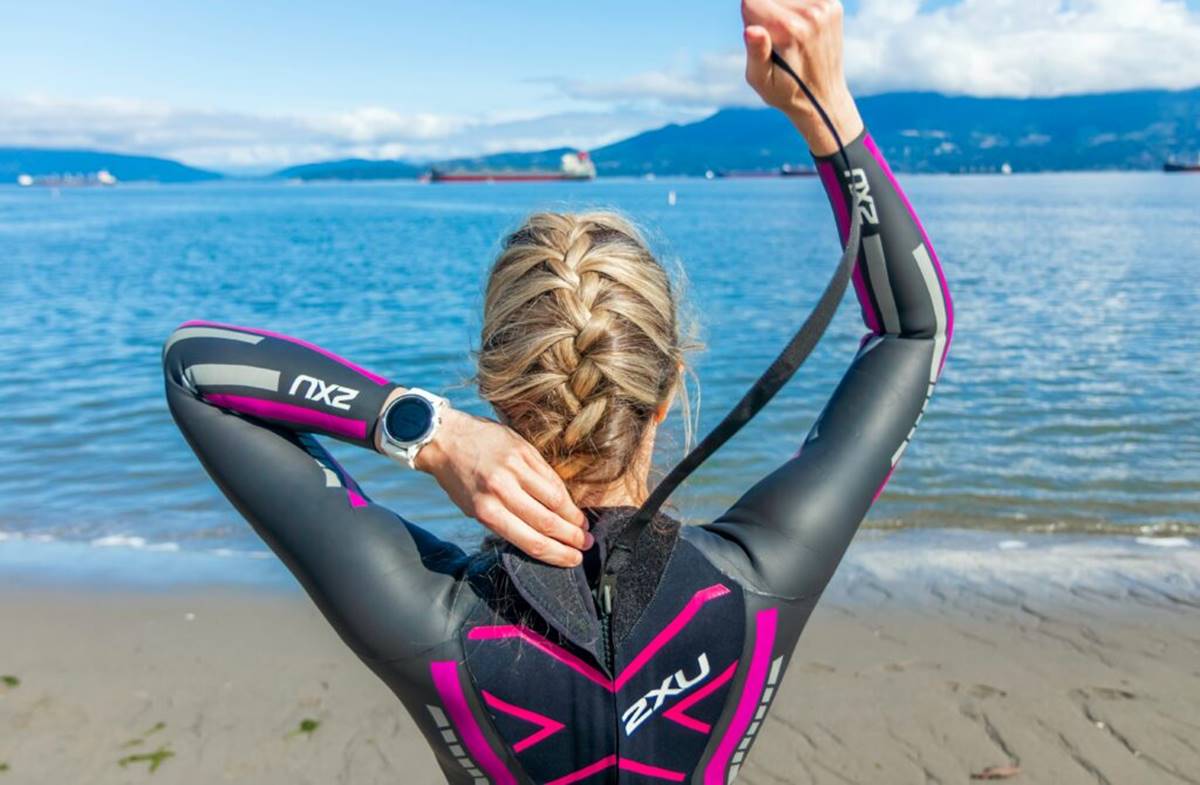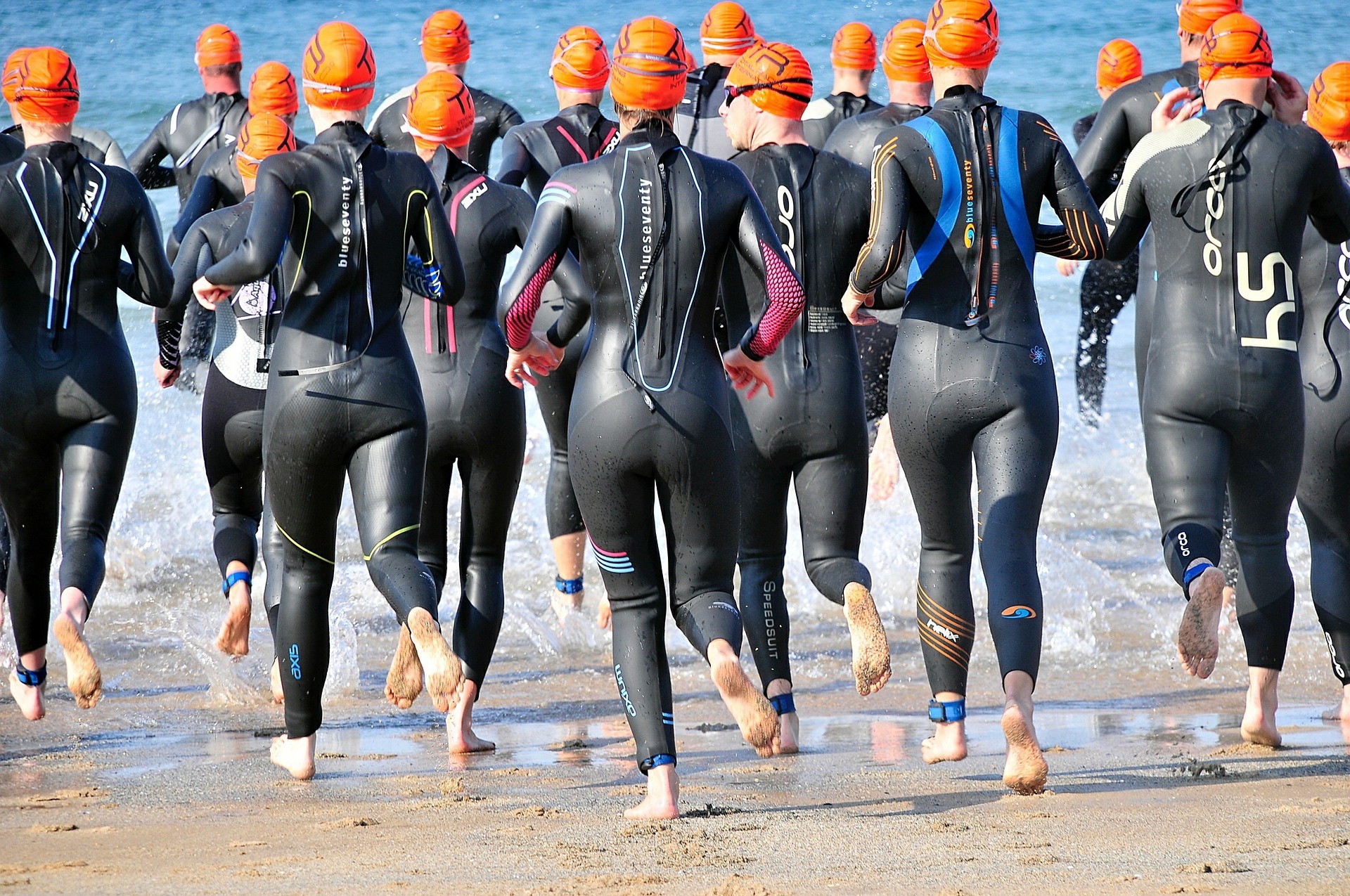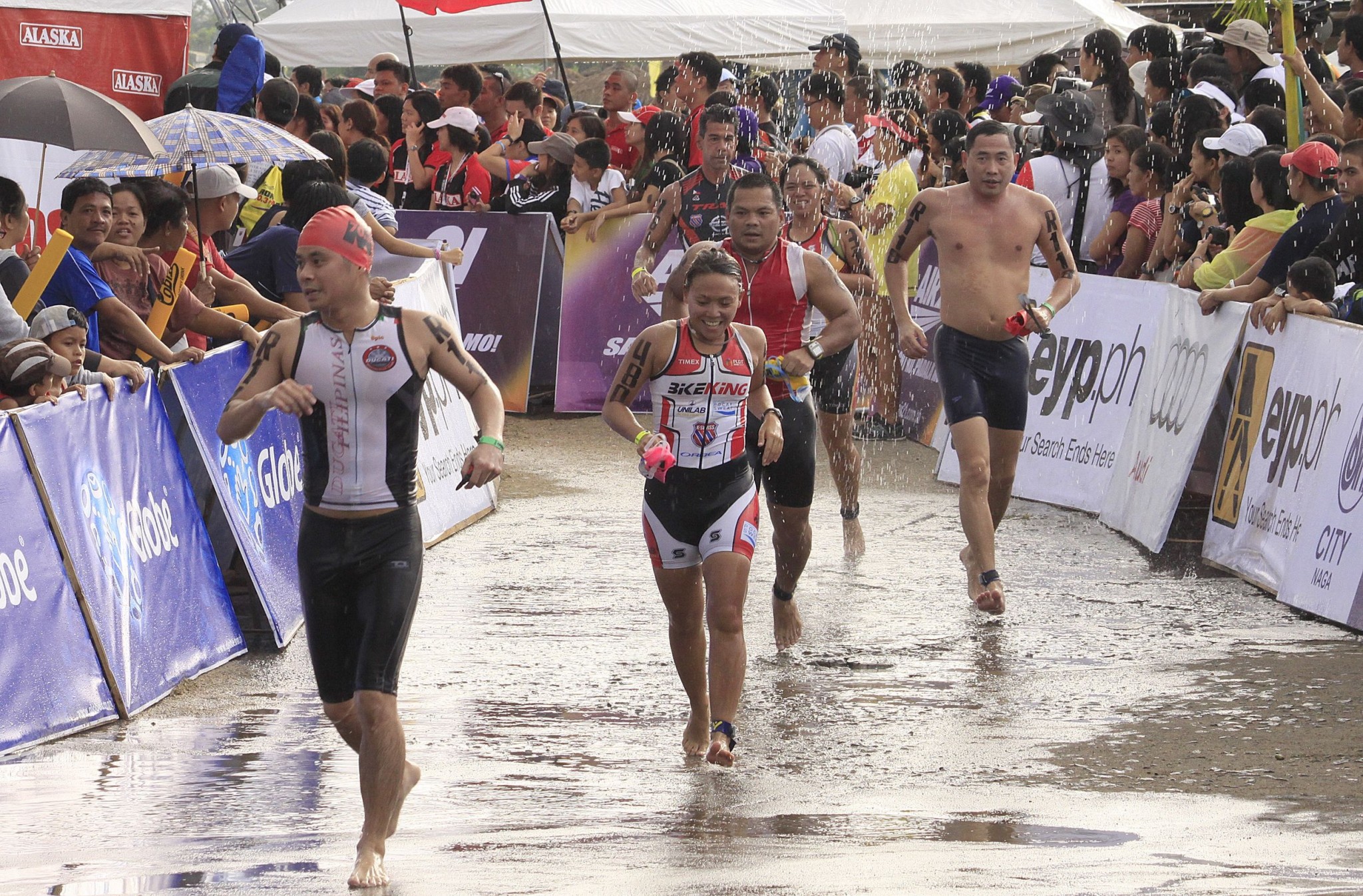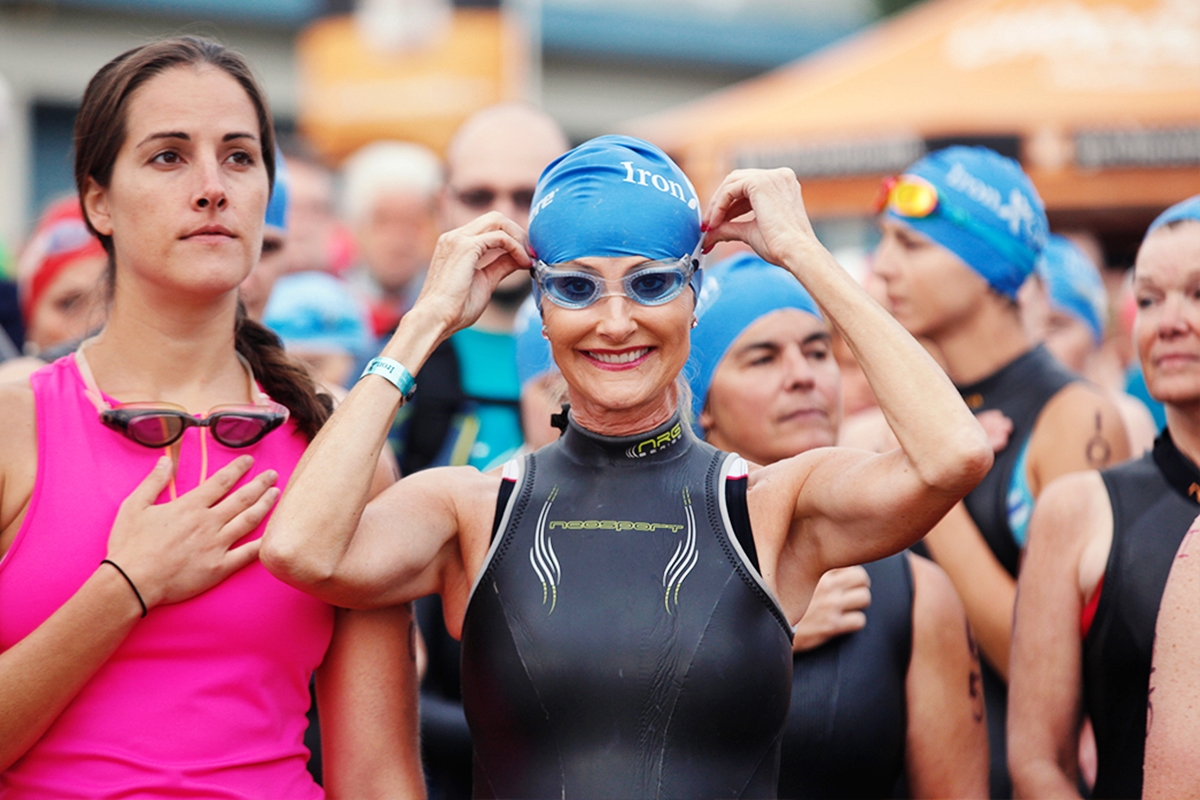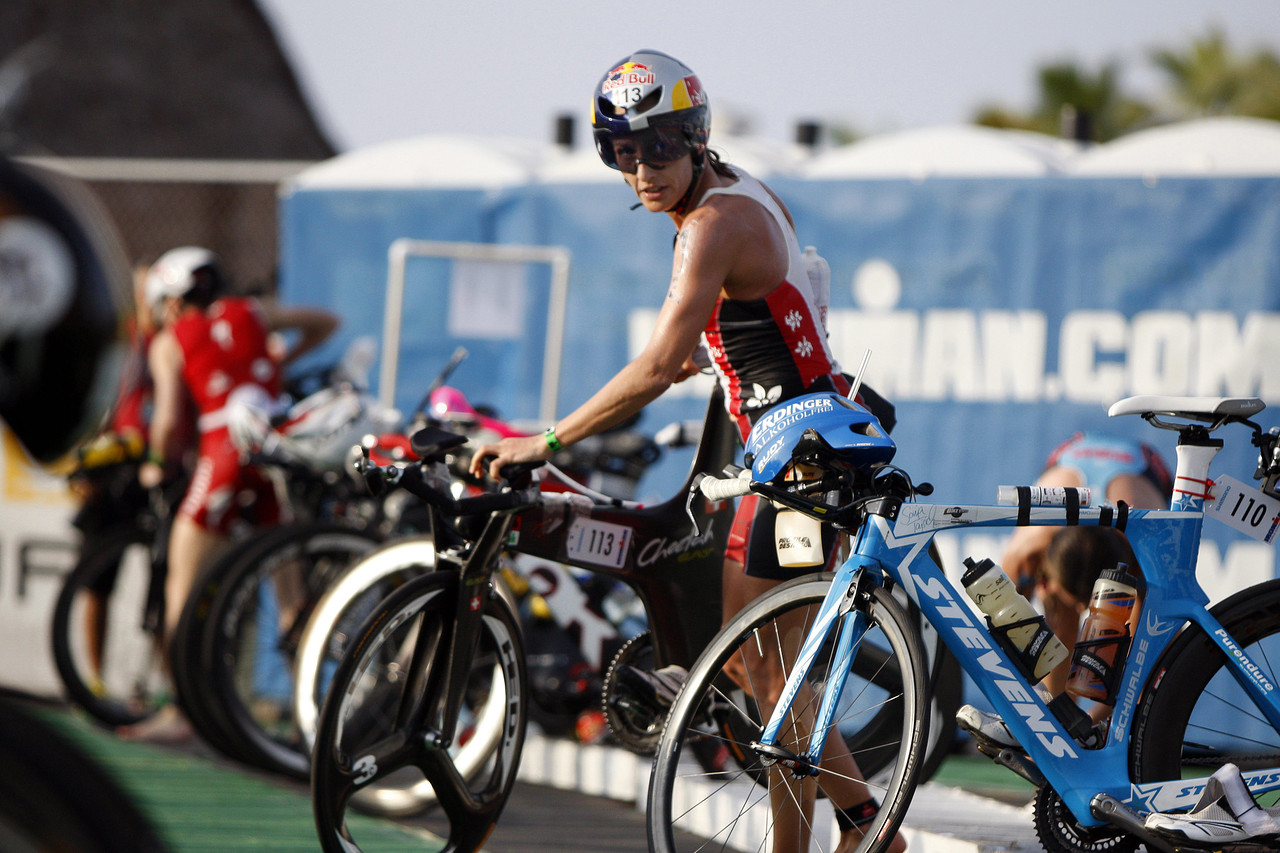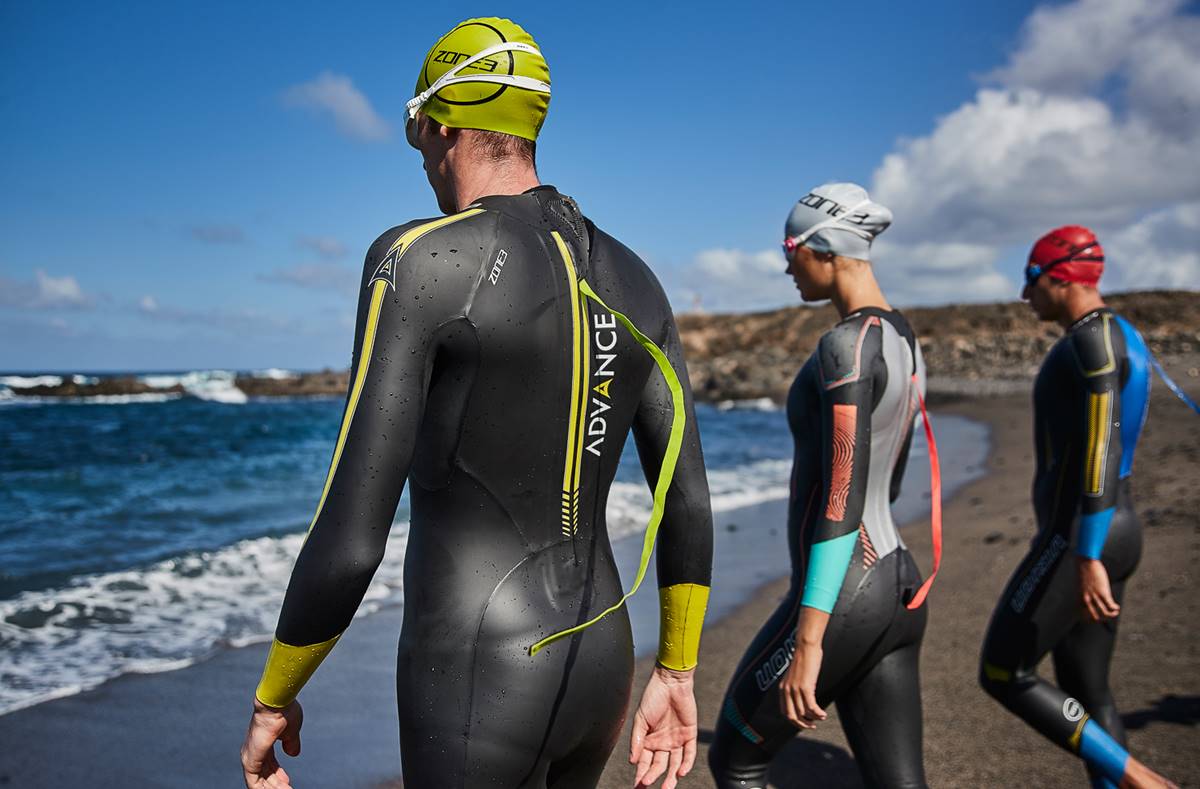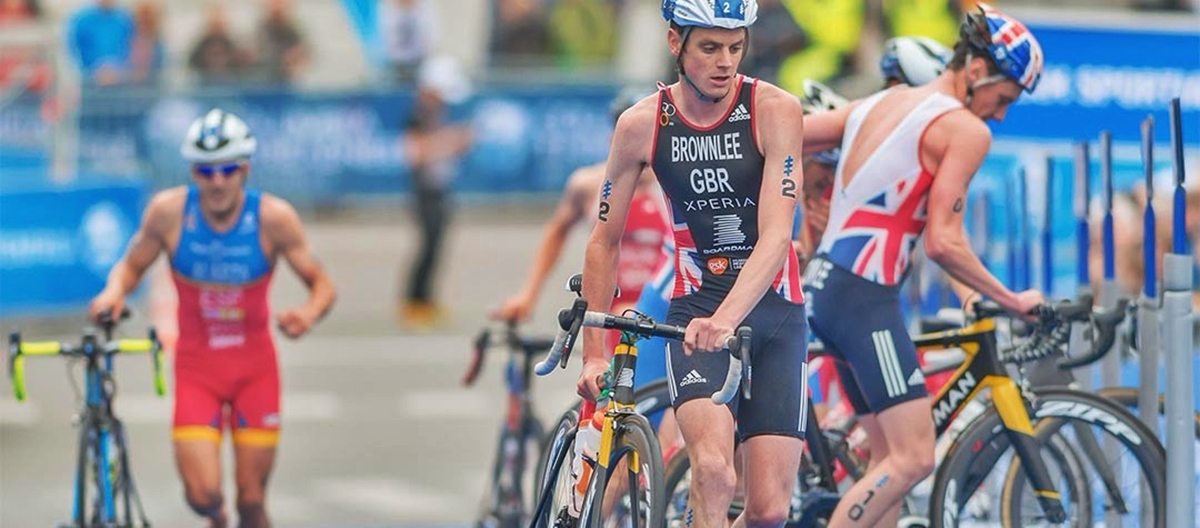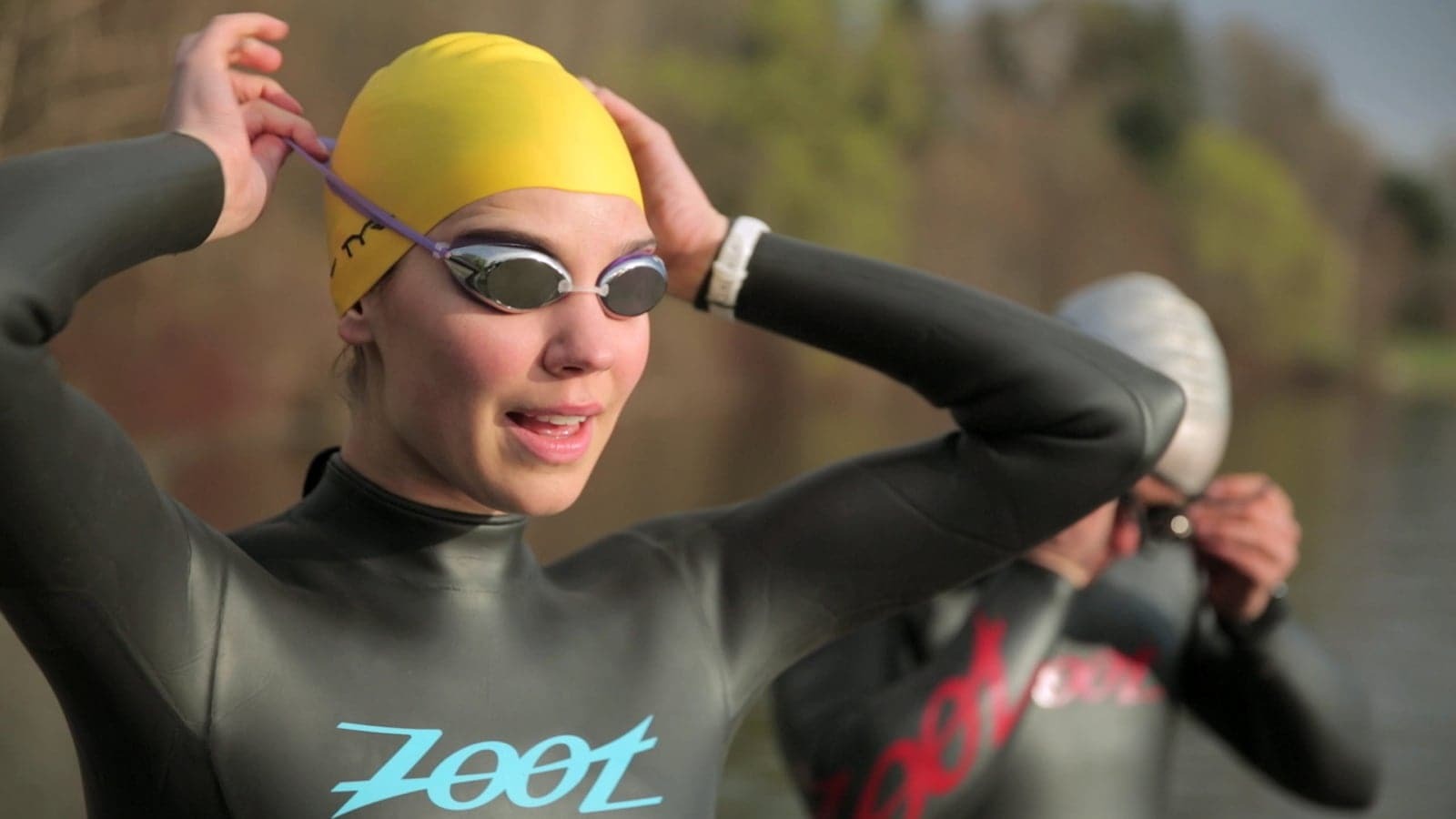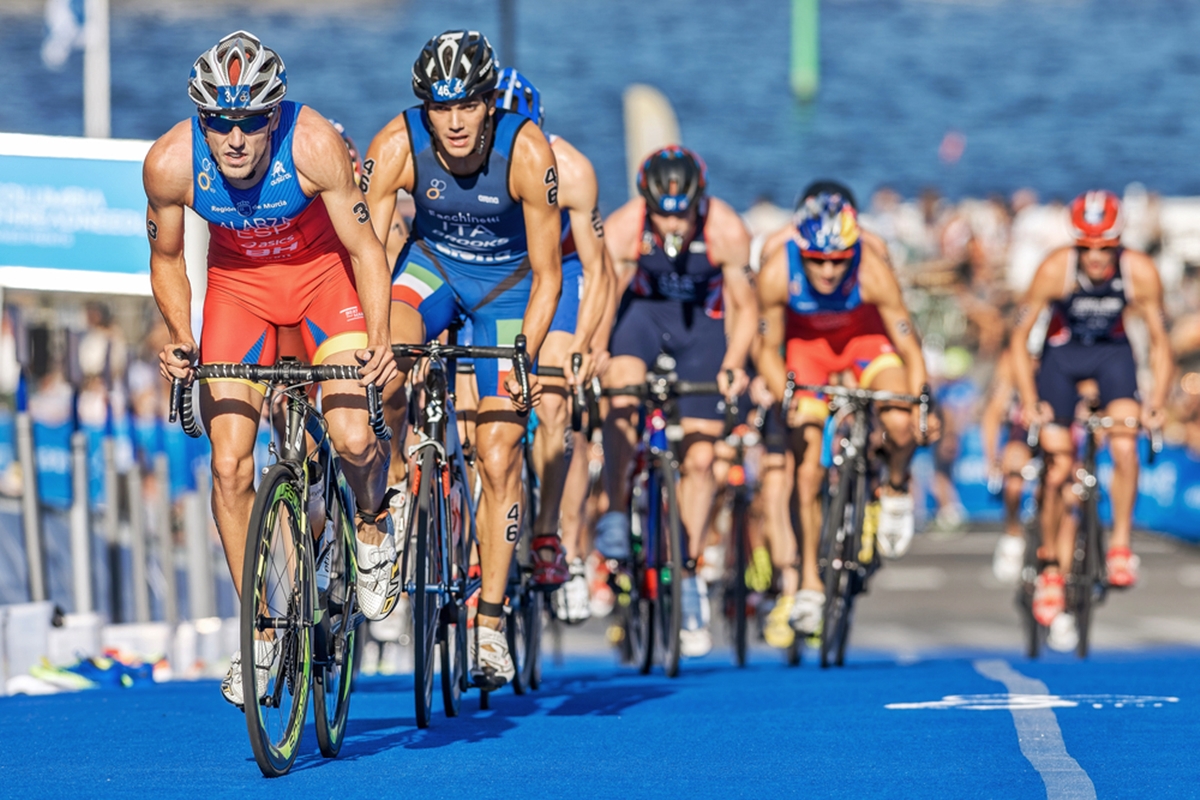Home>Misc>Featured>What Temperature Should I Wear A Wetsuit For A Triathlon
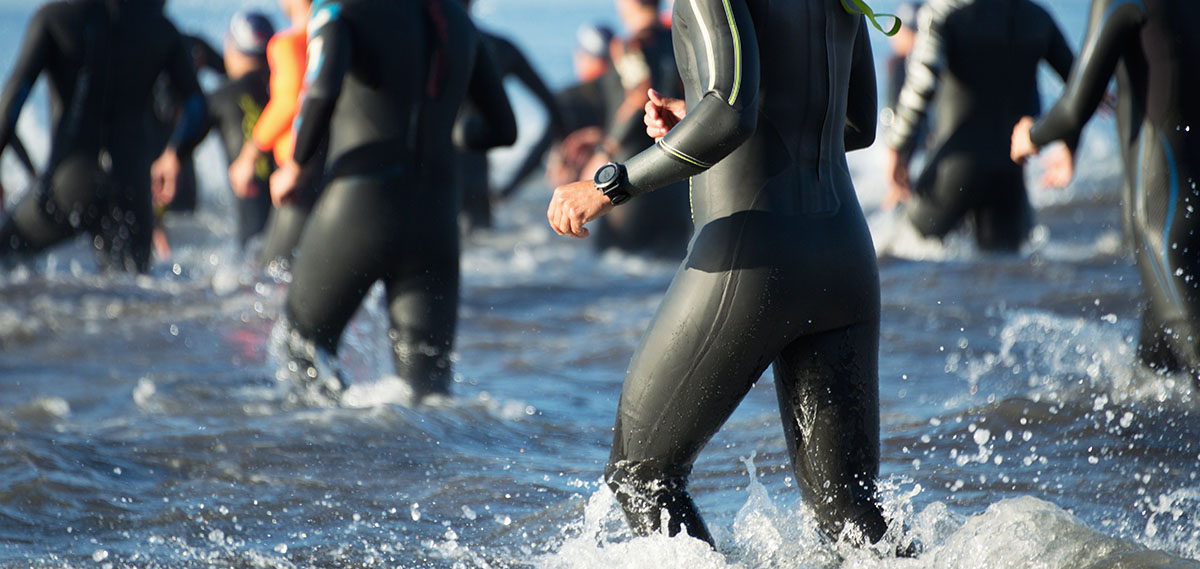

Featured
What Temperature Should I Wear A Wetsuit For A Triathlon
Published: August 12, 2023
Get the answer to "What temperature should I wear a wetsuit for a triathlon?" and stay informed with our featured guide on choosing the right wetsuit temperature range.
Introduction
When it comes to participating in a triathlon, it’s important to consider all aspects of your equipment, including what temperature wetsuit you should wear. A wetsuit is a crucial piece of gear that can significantly impact your performance and overall comfort in the water. Understanding the optimal wetsuit temperature for a triathlon can make a world of difference in your race experience.
Wearing a wetsuit in a triathlon offers numerous benefits. It provides buoyancy in the water, which helps improve your body position and reduces drag, ultimately making you more streamlined and efficient. Additionally, a wetsuit provides insulation, keeping your body warm in cold water temperatures and preventing hypothermia.
Choosing the right wetsuit temperature depends on various factors, such as the water temperature, your personal preference, and race regulations. Generally, wetsuits are categorized into different thicknesses, measured in millimeters, which offer varying levels of insulation. The thicker the wetsuit, the more warmth it provides.
Optimizing your wetsuit temperature is essential for maximizing its benefits. Wearing a wetsuit that is too thick for the water temperature can lead to overheating and restricted mobility, while wearing a wetsuit that is too thin can result in discomfort and even hypothermia in colder conditions.
The ideal wetsuit temperature for a triathlon depends on the water temperature. The general rule of thumb is to choose a wetsuit thickness that provides enough insulation to keep you comfortably warm without causing overheating. Understanding how different water temperatures can affect wetsuit performance is crucial when making this decision.
During a triathlon, it’s also essential to be able to adjust your wetsuit temperature as needed. This can be achieved by using various techniques such as flushing water through the wetsuit, partially unzipping it during the swim, or removing the top half during transition periods.
In this article, we will explore the benefits of wearing a wetsuit in a triathlon, factors to consider while choosing the right wetsuit temperature, the optimal wetsuit temperature for a triathlon, the effects of different water temperatures on wetsuit performance, and techniques to adjust the wetsuit temperature during a race. By understanding these aspects, you can make an informed decision and ensure that your wetsuit enhances your performance and comfort throughout the entire triathlon.
Benefits of Wearing a Wetsuit in a Triathlon
Wearing a wetsuit in a triathlon offers numerous advantages that can significantly impact your performance and overall experience in the water. Let’s explore some of the key benefits:
1. Buoyancy:
One of the primary benefits of wearing a wetsuit in a triathlon is the added buoyancy it provides. The neoprene material used in wetsuits is designed to trap a thin layer of water between the suit and your skin. This creates additional floatation, helping to lift you higher in the water and improve your body position. With increased buoyancy, you can maintain a more streamlined and efficient swimming stroke, reducing drag and conserving energy.
2. Insulation:
Another significant advantage of wearing a wetsuit is the insulation it offers. The neoprene material acts as a barrier, preventing the cold water from coming into direct contact with your skin. This insulation helps to keep your body warm, especially in colder water temperatures where hypothermia can be a concern. By maintaining a comfortable body temperature, you can swim longer and more comfortably during the race.
3. Streamlined Shape:
A wetsuit provides a sleek and form-fitting shape that helps to streamline your body in the water. This smooth surface minimizes water resistance, allowing you to glide through the water with less effort. The improved hydrodynamics offered by a wetsuit can result in faster swim times and less fatigue, giving you an advantage in the overall race.
4. Added Protection:
Aside from the performance benefits, wearing a wetsuit also offers added protection. It acts as a barrier against potential scrapes or scratches from rocks, debris, or other triathletes in the water. The neoprene material is durable and can help prevent minor injuries that may occur during the swim portion of the race.
5. Psychological Confidence:
Wearing a wetsuit can provide a psychological confidence boost. Knowing that you have the added buoyancy, insulation, and protection of a wetsuit can give you the assurance and peace of mind to focus on your performance. This psychological advantage can result in improved swim technique and overall race performance.
Overall, wearing a wetsuit in a triathlon can enhance your swimming performance, keep you warm in colder water temperatures, provide added protection, streamline your shape, and give you a psychological advantage. These benefits make the decision to wear a wetsuit a worthwhile investment for any serious triathlete.
Factors to Consider While Choosing the Right Wetsuit Temperature
Choosing the right wetsuit temperature for a triathlon is essential to ensure optimal performance and comfort in the water. Several factors should be taken into account when making this decision. Let’s explore these factors:
1. Water Temperature:
The most crucial factor to consider when choosing the right wetsuit temperature is the water temperature. It is essential to know the specific water temperature of the race location. Different wetsuit thicknesses provide varying levels of insulation, and selecting one that matches the water temperature will help you stay comfortable throughout the swim portion of the triathlon.
2. Personal Preference:
Individual comfort is another important factor to consider. Everyone has different tolerance levels for cold water, and some may prefer a bit more insulation even in slightly warmer water temperatures. It’s crucial to find a balance between warmth and flexibility to ensure maximum comfort during the swim.
3. Race Regulations:
Some triathlon events have specific regulations regarding wetsuit usage, particularly related to water temperature. It’s important to familiarize yourself with these regulations before making your wetsuit selection. Ensure that the wetsuit you choose complies with the rules of the race to avoid any penalties or disqualification.
4. Mobility and Range of Motion:
Consider the mobility and range of motion offered by the wetsuit. It should allow for unrestricted movement in the arms and shoulders, as well as flexibility in the hips, knees, and ankles. Finding the right balance between insulation and freedom of movement is crucial to ensure efficient swimming technique.
5. Duration of the Swim:
The length of the swim portion in the triathlon should also be taken into account. If the swim is relatively short, you may prioritize flexibility over insulation. However, if the swim is longer, it’s important to consider the potential impact of extended exposure to cold water and choose a wetsuit that provides sufficient insulation.
6. Training and Familiarity:
Consider your training and familiarity with using a wetsuit. If you are new to wearing a wetsuit or have limited experience, you may want to choose a wetsuit with more insulation for added comfort and confidence during the race.
By considering these factors – water temperature, personal preference, race regulations, mobility and range of motion, swim duration, and familiarity with using a wetsuit – you can make an informed decision when choosing the right wetsuit temperature for your triathlon. Finding the perfect balance between insulation and flexibility will help you perform at your best and enjoy the swim portion of the race.
Optimal Wetsuit Temperature for a Triathlon
The optimal wetsuit temperature for a triathlon depends primarily on the water temperature and your personal preference. Choosing the right wetsuit thickness is crucial to ensure maximum comfort and performance during the swim. Let’s explore the general guidelines for selecting the optimal wetsuit temperature:
Colder Water Temperatures:
If the water temperature is on the colder side, typically below 68°F (20°C), a thicker wetsuit is recommended. Wetsuits with thicknesses ranging from 3/2mm (3mm in the torso and 2mm in the arms and legs) to 4/3mm (4mm in the torso and 3mm in the arms and legs) provide excellent insulation in colder conditions. These thicker wetsuits help to retain body heat and keep you comfortable throughout the swim.
Moderate Water Temperatures:
In moderate water temperatures, usually between 68°F to 75°F (20°C to 24°C), a 2/2mm or 3/2mm wetsuit is suitable. These wetsuits offer a balance between insulation and flexibility, providing the right amount of warmth without sacrificing movement. The thinner neoprene material in these wetsuits allows for greater flexibility, making them ideal for longer swims or when the water isn’t too cold.
Warmer Water Temperatures:
For warmer water temperatures above 75°F (24°C), a wetsuit may not be necessary. However, some triathletes still prefer wearing a wetsuit in warmer conditions for added buoyancy and protection. In such cases, consider opting for a wetsuit with thinner panels, such as a 2/1mm or a sleeveless wetsuit. These designs provide minimal insulation while still offering other benefits, such as improved hydrodynamics and enhanced buoyancy.
It’s important to note that these guidelines are general recommendations, and individual preferences may vary. Some triathletes may prefer a thicker wetsuit even in warmer water temperatures, while others may opt for a thinner wetsuit in colder conditions. Ultimately, the optimal wetsuit temperature is a personal choice based on comfort, experience, and performance goals.
Before the race, it’s crucial to test your wetsuit in similar water temperatures and conditions to ensure it provides the right amount of insulation without causing discomfort or restriction. This will help you determine if any adjustments are needed to find the optimal wetsuit temperature for your triathlon.
Effects of Different Water Temperatures on Wetsuit Performance
The water temperature has a significant impact on the performance and effectiveness of a wetsuit during a triathlon. Understanding how different water temperatures affect wetsuit performance can help you make an informed decision when choosing the right gear for your race. Here are the key effects of various water temperatures on wetsuit performance:
Cold Water:
In colder water temperatures, a wetsuit provides crucial insulation to keep your body warm. The neoprene material helps trap a thin layer of water between the suit and your skin, which then warms up and acts as an insulating barrier. This insulation prevents rapid heat loss and helps maintain your core body temperature during the swim. Wetsuits with thicker neoprene, such as 4/3mm or 5/4mm, are recommended for colder water conditions.
However, in extremely cold water temperatures, wetsuits may not provide sufficient insulation to keep you warm. In such cases, additional accessories like neoprene hoods, gloves, and booties can be used to enhance thermal protection and further prevent heat loss.
Moderate Water:
In moderate water temperatures, wetsuits provide a balance between insulation and flexibility. The neoprene material still offers some insulation to keep you comfortable, but it is thinner compared to wetsuits designed for colder water. This allows for more freedom of movement without sacrificing warmth. Wetsuits with thicknesses ranging from 3/2mm to 2/2mm are commonly used in moderate water temperatures.
Warm Water:
In warmer water temperatures, wetsuits can have a different impact on performance. While they may not be necessary from an insulation standpoint, some triathletes still prefer wearing a wetsuit for other benefits. In warmer conditions, a wetsuit can provide additional buoyancy and streamline your shape, which can lead to improved swimming efficiency. In such cases, wetsuits with thinner panels or sleeveless designs are commonly used to reduce heat retention and allow better heat dissipation.
It’s important to note that wearing a wetsuit in extremely warm water can lead to overheating and discomfort. In these scenarios, using non-neoprene swimwear or opting for a swimskin, which offers minimal insulation but still provides some hydrodynamic advantages, may be more suitable.
When choosing a wetsuit for a triathlon, understanding the water temperature and its effect on wetsuit performance is essential. It allows you to select the appropriate wetsuit thickness and design, optimizing comfort, insulation, and swimming efficiency for the specific conditions of your race.
How to Adjust Wetsuit Temperature During a Triathlon
During a triathlon, it’s important to have the ability to adjust your wetsuit temperature as needed to ensure maximum comfort and performance. Whether the water temperature changes throughout the race or you simply feel too warm in your wetsuit, there are several techniques you can use to adjust the wetsuit temperature during the event:
1. Flushing Technique:
If you feel too warm in your wetsuit, the flushing technique can help cool you down. This involves letting water enter the wetsuit by briefly opening the neck or wrist cuffs, and then releasing it out of the suit by purposely moving your arms or legs. The water circulation helps dissipate heat and makes you feel cooler. This technique can be used during breaks or in parts of the race where cooling down is necessary.
2. Partial Unzipping:
Depending on the wetsuit design, you may have the option to partially unzip the wetsuit during the swim portion of the race. This allows for better airflow and ventilation, helping to regulate your body temperature. However, ensure that unzipping the wetsuit doesn’t compromise its fit or affect your hydrodynamics. Practice this technique during your training to find the most comfortable and efficient way to partially unzip your wetsuit.
3. Removing the Top Half:
In certain triathlon events, such as those where the swim is followed by a bike ride, you may have the opportunity to remove the top half of your wetsuit during the transition period. This can help in regulating your body temperature and provide relief from overheating. Practice efficiently removing the upper portion of your wetsuit before the race to ensure a seamless transition and avoid unnecessary delays.
4. Proper Hydration:
Staying hydrated is crucial during a triathlon and can also impact your body’s ability to regulate temperature. Make sure to consume fluids regularly throughout the race to prevent dehydration, which can worsen the perception of heat inside the wetsuit. This will help you maintain a more comfortable body temperature, especially when feeling warmer than desired.
Remember, it’s important to be mindful of race regulations and ensure that any adjustments to your wetsuit temperature comply with the rules. Check the race guidelines beforehand to verify if specific techniques, such as partial unzipping or removing the top half of the wetsuit, are allowed.
By incorporating these techniques into your triathlon strategy, you can effectively adjust your wetsuit temperature as needed during the race. This will help optimize comfort, prevent overheating, and improve overall performance in the swim portion of the event.
Conclusion
Choosing the right wetsuit temperature for a triathlon is crucial for maximizing performance and comfort in the water. Wetsuits offer numerous benefits, including buoyancy, insulation, streamlined shape, and added protection. By understanding the factors to consider while choosing a wetsuit temperature, such as water temperature, personal preference, race regulations, mobility, and swim duration, you can make an informed decision that suits your specific needs.
Knowing the effects of different water temperatures on wetsuit performance helps you select the appropriate wetsuit thickness and design. Cold water requires thicker wetsuits to provide insulation, while moderate temperatures necessitate a balance between insulation and flexibility. In warmer water, wetsuits may not be necessary for insulation but can still offer advantages like added buoyancy and hydrodynamics.
During a triathlon, it’s important to have the ability to adjust your wetsuit temperature as needed. Techniques such as the flushing technique, partial unzipping, and removing the top half of the wetsuit can help regulate your body temperature and enhance comfort during the race.
Ultimately, finding the optimal wetsuit temperature is a balance between insulation, flexibility, and personal preference. Test your wetsuit in similar conditions before the race to ensure it provides the right amount of warmth and comfort without compromising movement. Keep race regulations in mind and ensure any adjustments to wetsuit temperature comply with the rules of the event.
By considering all these factors and techniques, you can enhance your triathlon experience and swim performance. A well-fitted and properly adjusted wetsuit will keep you comfortable, insulated, and streamlined in the water, allowing you to focus on your race and achieve your goals with confidence.

